#elisabeth duplay
Text
More Père Lachaise with @robespapier
Eleonore:

Babet and Junior:
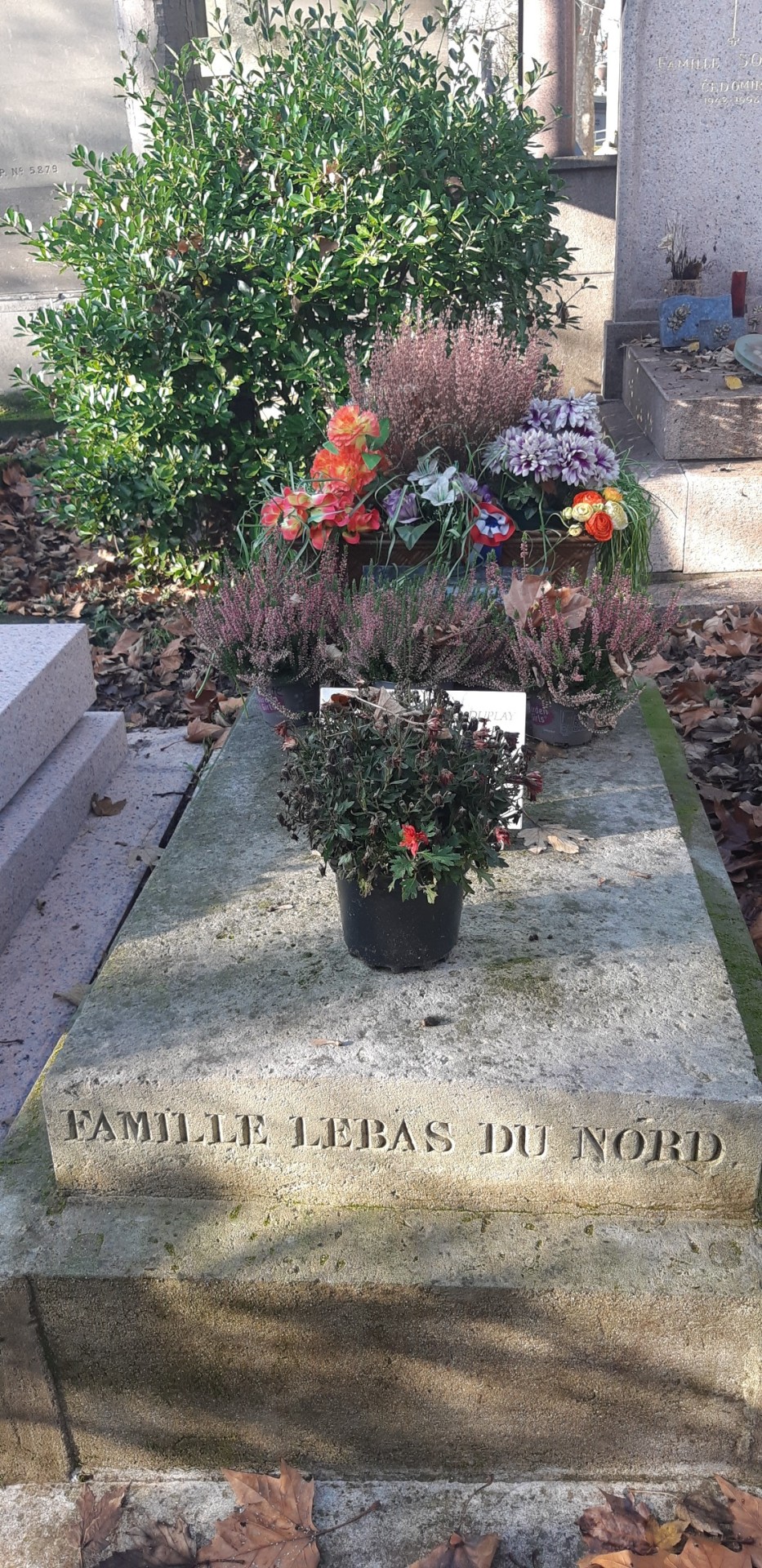


Barras (look at the sad state of it):
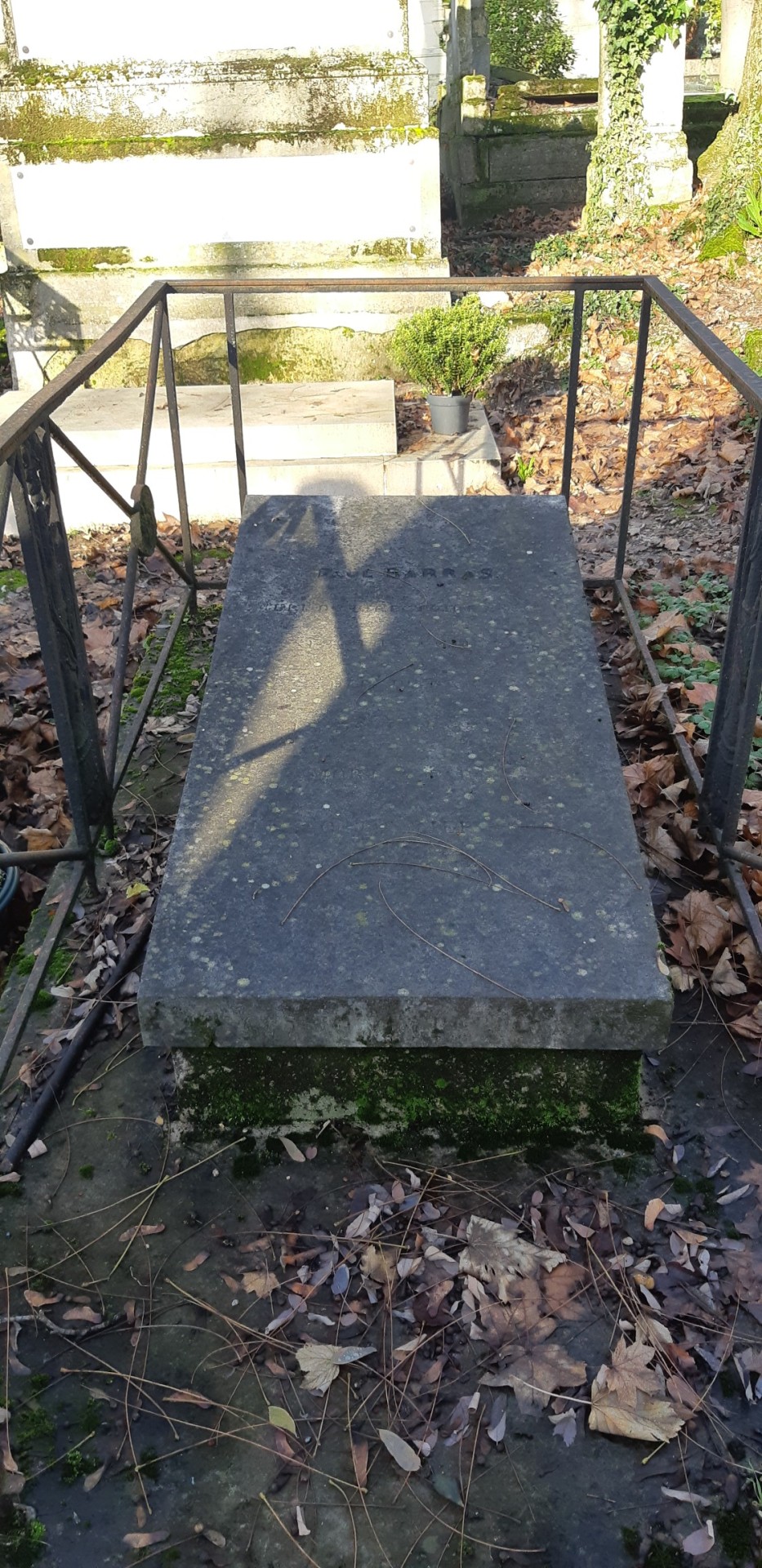

Tallien again:

And last, but certainly not the least, Fouché's daughter in law (captured because of the last name alone tbh.)

His son is also buried at Père Lachaise but we didn't have time to visit him. Apparently, he does NOT have "Fouché" on the tombstone! Just "F." and "d'Otrante". (Come on, be proud of the snake name!)
60 notes
·
View notes
Text
I visited Eleanore and Elisabeth's graves today. It was definitely a very emotional and bittersweet experience for me. I was fine until I saw the small cockade placed on Elisabeth's tombstone. Then I lost it 😅 I told her how thankful I was for all she did for the revolution, and despite Thermidorians working staunchly against her, telling her story- Phillip's story, Antoine's story, Maxim's story. I feel as if I'm deeply indebted to her in a way, I guess. I admire her for the incredible, strong, resilient woman she was. And I thank her for telling her own story and her friends' stories, so that I can carry them on. Rest well, dear DuPlay sisters. Thank you for all you did in kindness and for the revolution. I won't let it be in vain.


79 notes
·
View notes
Text
Some primary sources
I plan to add more whenever I find more.
Historie Parlamentaire de la Révolution Française ou Journal des Assemblées Nationales, depuis 1789 jusqu’en 1815
Volume 1 (May 1789)
Volume 2 (June-September 1789)
Volume 3 (September-December 1789)
Volume 4 (December 1789-March 1790)
Volume 5 (March-May 1790)
Volume 6 (May-August 1790)
Volume 7?
Volume 8 (November 1790-February 1791)
Volume 9 (February-May 1791)
Volume 10 (May-July 1791)
Volume 11 (July-September 1791)
Volume 12 (September-December 1791)
Volume 13 (January-March 1792)
Volume 14 (April-June 1792)
Volume 15 (June-July 1792)
Volume 16 (July-August 1792)
Volume 17 (August-September 1792)
Volume 18 (September 1792)
Volume 19 (September-October 1792)
Volume 20 (October-November 1792)
Volume 21 (November-December 1792)
Volume 22 (December 1792-January 1793)
Volume 23 (January 1793)
Volume 24 (February-March 1793)
Volume 25 (March-April 1793)
Volume 26 (April-May 1793)
Volume 27 (May 1793)
Volume 28 (July-August 1793)
Volume 29 (September-October 1793)
Volume 30 (October-December 1793)
Volume 31 (November 1793-March 1794)
Volume 32 (March-May 1794)
Volume 33 (May-July 1794)
Volume 34 (July-August 1794)
Recueil des actes du comité de salut public
Volume 1 (August 12 1792-January 21 1793)
Volume 2 (January 22-March 31 1793)
Volume 3 (April 1-May 5 1793)
Volume 4 (6 May-18 June 1793)
Volume 5 (19 June-15 August 1793)
Volume 6 (15 August-21 September 1793)
Volume 7 (22 September-24 October 1793)
Volume 8 (25 October-26 November 1793)
Volume 9 (27 November-31 December 1793)
Volume 10 (1 January-8 February 1794)
Volume 11 (9 February-15 March 1794)
Volume 12 (16 March-22 April 1794)
Volume 13 (23 April-28 May 1794)
Volume 14 (29 May-7 July 1794)
Volume 15 (8 July-9 August 1794)
Recueil de documents pour l’histoire du club des Jacobins de Paris
Volume 1 (1789-1790)
Volume 2 (January-July 1791)
Volume 3 (July 1791-June 1792)
Volume 4 (June 1792-January 1793)
Volume 5 (January 1793-March 1794)
Volume 6 (March-November 1794)
Histoire du tribunal révolutionnaire de Paris: avec le journal de ses actes.
Volume 1
Volume 2
Volume 3
Volume 4
Volume 5
Papiers inédits trouvés chez Robespierre, Saint-Just, Payan etc
Volume 1
Volume 2
Volume 3
Oeuvres complètes de Robespierre
Volume 1 (Robespierre à Arras)
Volume 2 (Les œuvres judiciaires)
Volume 3 is the correspondence, listed below
Volume 4 (Le defenseur de la Constitution)
Volume 5 (lettres à ses comettras)
Volume 6 (speeches 1789-1790)
Volume 7 (speeches January-September 1791)
Volume 8 (speeches October 1791-September 1792)
Volume 9 (speeches September 1792-June 27 1793)
Volume 10 (speeches June 27 1793-July 27 1794)
Oeuvres de Maximilien Robespierre (not the same as Oeuvres completés)
Volume 1
Volume 2
Volume 3
Oeuvres de Jerome Pétion
Volume 1
Volume 2
Volume 3
Volume 4
Oeuvres complètes de Saint-Just
Volume 1
Volume 2
Oeuvres littéraires de Hérault de Séchelles (1907)
Oeuvres de Danton (1866)
Discours de Danton (1910) by André Fribourg
Works by Desmoulins
La France Libre (1789)
Discours de la Lanterne aux Parisiens (1789)
Révolutions de France et de Brabant (1789-1791)
Volume 1 (number 1-13)
Volume 2 (number 14-26)
Volume 3 (number 27-39)
Volume 4 (number 40-52)
Volume 5 (number 53-65)
Volume 6 (number 66-79)
Volume 7 (number 80-86)
La Tribune des Patriots (1792) (all numbers)
Le Vieux Cordelier (1793-1794) (all numbers)
Jean Pierre Brissot démasqué (1792)
Histoire des Brissotins (1793)
Correspondences
Correspondance de Maximilien et Augustin Robespierre (1926)
Correspondance de George Couthon (1872)
Correspondance inédit de Camille Desmoulins (1836)
Correspondance inédite de Marie-Antoinette (1864)
Billuad-Varennes — mémoires et correspondance
Correspondance de Brissot
Lettres de Louis XVI: correspondance inédite, discours, maximes, pensées, observations etc (1862)
Lettres de Madame Roland (1900)
Volume 1
Volume 2
Correspondance inédite de Mlle Théophile Fernig (1873)
Journal d’une bourgeoise pendant la Révolution 1791-1793 by Rosalie Jullien (1881)
Memoirs
Memoirs of Bertrand Barère
Volume 1
Volume 2
Volume 3
Volume 4
Memoirs of Élisabeth Lebas
In French
In English
Mémoires de Charlotte Robespierre sur ses deux frères (1835)
In French
In English
Memoirs of Joseph Fouché
Volume 1 (English)
Volume 2 (French)
Mémoires de Brissot (1877)
Mémoires inédits de Pétion et mémoires de Buzot et Barbaroux (1866)
Memoirs of Barras — member of the Directorate (1899)
Mémoires inédits de madame la comtesse de Genlis depuis 1756 jusqu’au nos jours
Volume 1
Volume 2
Volume 3
Volume 4
Volume 5
Volume 6
Volume 7
Volume 8
Volume 9
Volume 10
Mémoires de Madame Roland
Volume 1
Volume 2
Mémoires de Louvet (1862)
Memoirs of the Duchess de Tourzel: Governess to the Children of France During the Years 1789, 1790, 1791, 1792, 1793 and 1795
Volume 1
Volume 2
Révélations puisées dans les cartons des comités de salut public et de sûreté générale, ou Mémoires (inédits) de Sénart, agent du gouvernement révolutionnaire (1824)
Free books
Danton (1978) by Norman Hampson (borrowable for an hour, renewable every hour)
Robespierre (2014) by Hervé Leuwers (borrowable for an hour, renewable every hour)
Collot d’Herbois — légendes noires et Révolution (1995) by Michel Biard
Choosing Terror (2014) by Marisa Linton
The Coming of the Terror in the French Revolution (2015) by Timothy Tackett
Augustin: the younger Robespierre by (2011) by Mary-Young
Journaliste, sans-culotte et thermidorien: le fils de Fréron, 1754-1802, d’après des documents inédits (1909) by Raoul Arnaud
Un Champion de la Royauté au début de la Révolution - François Louis Suleau (1907)
Part 1
Part 2
Part 3
Part 4
Camille Desmoulins and his wife — passages from the history of the dantonists (1876) by Jules Claretie
Vadier, président du Comité de sûreté générale sous la Terreur d’après des documents inédits (1896) by Albert Tournier
Mémoires historiques et militaires sur Carnot (1824)
Le Puy-de-Dôme en 1793 et le Proconsulat de Couthon (1877) by Francisque Mège
Le procès des Dantonistes, d'après les documents, précédé d'une introduction historique. Recherches pour servir à l'histoire de la révolution française (1879) edited by Dr. Jean François Eugène Robinet
Robert Lindet, député à l'Assemblée législative et à la Convention, membre du Comité de salut public, ministre des finances : notice biographique (1899) by Amand Montier
Prieur de la Côte-d'Or (1900) by Paul Gaffarel
Un épicurien sous la Terreur; Hérault de Séchelles (1759-1794); d'après des documents inédits (1907) by Emile Dard
Twelve Who Ruled (1941) by R. R. Palmer (borrowable for an hour, renewable every hour)
Bertrand Barère: A Reluctant Terrorist (1963) by Leo Gershoy (borrowable for an hour, renewable every hour)
Saint-Just : sa politique et ses missions (1976) by Jean-Pierre Gross (borrowable for an hour, renewable every hour)
The Glided Youth of Thermidor (1993) by François Gendron
Pauline Léon, une républicaine révolutionnaire by Claude Guillon
Billaud-Varenne: Géant de la Révolution (1989) by Arthur Conte
When the King Took Flight (2003) by Timothy Tackett (borrowable for an hour, renewable every hour)
Joseph Le Bon, 1765-1795; la terreur à la frontière (1932) by Louis Jacob
Volume 1
Volume 2
Resources shared by other tumblr users (thank you all very much!!!)
Resources shared by @iadorepigeons
Resources shared by @georgesdamnton
Resources shared by @rbzpr:
Fabre d’Eglantine resources shared by @edgysaintjust
Saint-Just resources shared by @sieclesetcieux
Saint-Just resources shared by @orpheusmori
Marat resources shared by @orpheusmori
My own translations
Lucile Desmoulins’ diary (1788, 1789, 1790, 1792-1793)
Charlotte Robespierre et ses amis (1961)
Laponneraye on the life of Charlotte Robespierre (1835)
Abbé Proyart on the childhood of Robespierre (1795)
Regulations for the internal exercises of the College of Louis-le-Grand (1769)
Regulations for law students at Louis-le-Grand (1782)
Belongings left by Danton, Fabre and Desmoulins after their arrest
Letters from Robespierre’s father
Robespierre family timeline
#frev resources#frev#french revolution#maximilen robespierre#augustin robespierre#robespierre#george couthon#couthon#camille desmoulins#desmoulins#joseph fouché#fouché#charlotte robespierre#elisabeth lebas#elisabeth duplay#billaud-varennes#jerome Pétion#jacques-pierre brissot#saint-just
456 notes
·
View notes
Text
JACOBIN FICTION CONVENTION MEETING 33: MADEMOISELLE REVOLUTION (2022)

1. The Introduction
Well, hello there, my dearest Citizens! Welcome back to Jacobin Fiction Convention! I missed you but, unfortunately, real life ™️ was a bit complicated yet again.
Either way, I’m back at it again, roasting analyzing historical fiction. Today’s “masterpiece” was graciously sent to me by @suburbanbeatnik in PDF form as a future review subject. And boy is it one hell of a ride.
Now, on paper, I was intrigued by a story of a Haitian biracial bisexual female protagonist, as there are many possibilities for that kind of story to unfold in a Frev setting.
Besides, it was written by an author who is promoting the #OwnVoices stories, which is a good intention in my opinion. Let’s see if the execution matches though.
(Spoiler alert: IT DOES NOT!)
Unfortunately, it looks like the book is only available in English at the moment and has to be purchased, mainly through Amazon. But maybe both of those things are for the best, since, upon finishing the book, I will be happy if it stays as contained and inaccessible to the wide audience as humanly possible.
Why? Well, more on that later.
This review will be longer than the ones I usually post, so please keep that in mind and grab some popcorn.
Also, it’s a very explicit book with scenes of sexual assault and gore. Goya’s “Disasters of War” and even “Innocent Rouge” levels of gore. So yeah, please be warned.
Anyway, this review is dedicated to @suburbanbeatnik , @jefflion , @lanterne , @on-holidays-by-mistake and @amypihcs . Love you, guys!
Now, let’s tear this sucker apart!!!
2. The Summary
The book follows the story of Sylvie de Rosiers, an aristocratic young woman born to a slave but raised by her plantation owner father as a free member of local nobility. Although not enslaved, Sylvie never felt truly accepted by the elites of Sainte Domingue.
However, following the outbreak of the Haitian Revolution, Sylvie and one of her half-brothers manage to escape to France, where another revolution is unfolding.
Intrigued by the ideas of Liberty, Equality and Fraternity, Sylvie must fight to find acceptance in this new context and carve out a place for herself.
Sounds interesting so far, right? Let’s see if the story lives up to expectations or not.
3. The Story
I have to admit that the first few chapters, the ones taking place on Haiti, were actually pretty good, or at least not bad. The pacing was good, the storyline building up to the uprising made sense and the introductions of the characters and the world building were fine.
Too bad that this lasted only for about four beginning chapters. The French chapters making up the bulk of the book were awful.
The characters suffer from assassination like they’re mafia snitches, the pacing turns into a speed run, the historical context isn’t explained well at all and the story rapidly stops making sense:
First Sylvie arrives and quickly meets Robespierre and the Duplay family, then becomes an ardent revolutionary, then flip flops between loving Eleonore Duplay and pining for Robespierre, then just so happens to meet Danton and Marat, then becomes a spy, then murders Marat… No, I’m not joking.
All of this is in the book with very little justification that makes sense. The worst part? The book isn’t stated as alternative history, so the author is very dishonest and presents everything in the book as actual history that is accurate to reality when it’s definitely not.
Oh, and flashbacks. The fucking flashbacks breaking immersion like a cat breaking a vase don’t help at all.
There’s also a ton of Thermidorian propaganda as well, so yeah… Fail.
4. The Original Characters
Let’s tackle the OCs first because the historical peeps deserve a separate category here.
First and foremost, I don’t like Sylvie as a character. She starts out as a vain spoiled brat growing up surrounded by privilege and luxury and openly looking down on slaves, especially on women.
Then she witnesses the execution of a rebel and very suddenly goes: “Fuck, slavery is awful!”, renounces her old ways, disowns her father and does a 180. It’s not written well though and is more like a teenage tantrum than character development.
Sylvie keeps flip flopping like this throughout the entire story too. Yay…
Oh, and she’s a Mary Sue. Everyone adores her except the villains, she’s able to charm her way through anything and obviously plays an important role in almost all of Frev! Robespierre even calls her The Mother of the Revolution at several points, even though she did nothing to earn that title.
She also pines for Robespierre for no reason at all, except for “he’s cool and charming I guess”, but in order to get closer to him, Sylvie Sue ™️ starts an intimate relationship with Eleonore Duplay.
So yeah, our protagonist manipulates another person (which is abuse) and plays Eleonore like a fiddle, but she also flip flops between only using Eleonore and actually loving her. Is Sylvie ever called out for that? Technically yes, but it gets resolved too quickly so it doesn’t count.
Also, Sylvie is INCREDIBLY selfish. She’s fine with manipulating Eleonore, fine with Charlotte Corday being executed for killing Marat (in the book Sylvie did it) and taking the blame… Again, everything revolves around Sylvie and she never gets called out on that either and never gets better.
She lacks consistent personality aside from those traits, however. She claims to want safety yet always takes the risky option and refuses to emigrate when it would help her obtain actual safety, for instance.
Gaspard, one of her half-brothers, is a much better character in my opinion, but still underdeveloped. But at least his journey from privileged fop to a revolutionary is less clunky. Too bad he dies with the Montagnards in the end.
Sylvie also has another half-brother, Edmond, who is cartoonishly evil and tries to murder Sylvie at one point.
Sylvie also has a standard issue evil stepmother who is eager to marry her off and thus get rid of her but at least has enough decency to not be actively malicious.
Her dad is loving, but painfully ignorant.
Sylvie’s aunt Euphemie de Rohmer is a good character, always looking out for Gaspard and Sylvie. She does emigrate to London during the reign of terror though.
Okay, now let’s discuss the historical figures.
5. The Historical Characters
I know that I usually don’t discuss accuracy, but an exception must be made here.
Maximilien Robespierre seems to undergo a typical “character arc” of “actual revolutionary turned ruthless dictator”. He is also one again coded as asexual and thus shown as not giving two shits about his lover, Eleonore Duplay. He tries to marry Sylvie for political reasons only later in the book and it’s all but stated that he condones all the violence going on and is called a hypocrite multiple times. Oh, and he also kisses Sylvie without her consent… Err… DID SIVAK CONFUSE HIM FOR DANTON?!!! Okay, one sec…

(Shows up with a bloody face) Okay, let’s continue…
Eleonore Duplay is a promising artist who is fiercely loyal to Robespierre but cheats on him with Sylvie and later turns out to be a member of a women’s secret society that is trying to curb the terror. She’s on board with murdering Marat and is also friends with Olympe de Gouges and Charlotte Corday. Wtf?!
(Checks that the antidepressants didn’t cause a hallucination)
Elisabeth Duplay falls in love with Gaspard and her marriage to Le Bas is portrayed as arranged by Robespierre to “reward” Le Bas for being a loyal Jacobin, but at least she is relatively happy in said marriage. Uhm, okay…
Olympe de Gouges and Charlotte Corday are portrayed as basically saints and also part of the secret society.
Corday in particular is willing to sacrifice herself for the sake of France and Sylvie is fine with that because, apparently, Corday has nothing to live for anyway but Sylvie does.
It’s not like in reality Corday actually had a family and Girondist friends or anything so yeah, TOTALLY OKAY to throw her under the bus amirite?!
Danton, luckily, is portrayed fairly accurately as a crass womanizing brute so at least that’s correct.
Marat is a stereotypical bloodthirsty monster who is supposed to be very smart yet acts like an idiot in the presence of our dear Sylvie Sue.
Charlotte Robespierre makes exactly one cameo and acts like a total ass to both Duplay sisters and to Sylvie (who she just met). Don’t get me wrong, Charlotte was at odds with the Duplay family but not all of them and certainly she wasn’t a bitch to every single fucking stranger.
Augustin Robespierre is merry, a gentleman, loyal to his ideas but also a part of that secret society and also supports the idea of offing Marat. Nice…
Surprisingly, Henriette Robespierre makes a cameo alongside Charlotte and also acts like an ass but at least less so than Charlotte. Except she shouldn’t even be in the book because the cameo happens in 1792, yet Henriette died in 1780. So it’s either a ghost or the author doesn’t care. I’m kind of inclined to believe the latter.
Where are Camille Desmoulins and Saint-Just, you may act? ABSENT, believe it or not! No, I’m not kidding! They’re nowhere to be seen for some reason!!! I have no idea why. They’re not even fucking mentioned!!!
Anyway, let’s move on before I lose my sanity.
6. The Setting
Again, the first chapters are much better than the rest. In the majority of the book the descriptions are not that great and the world building is laughably inaccurate, to the point that, if I were told that it’s a joke fanfic, I’d have believed it instantly!!!
7. The Writing
Thankfully, there’s no “First Person Present Tense” bullshit, but the writing is still full of problems. The aforementioned flashbacks are just one problem, but there are others.
For example, extremely clunky use of French. I’m the beginning of every chapter we get a date and the months are in French. This would’ve been fine but gets ridiculous in cases like “early avril 1793”. What’s wrong with writing “early APRIL”?!
Oh, and in another instance, the houses of families are called “Chez + Family name”, like Chez Rohmer and Chez Marat. It gets weird when the text has phrases like “went at Chez Marat”. Chez already means “at” in this context, so it’s extremely redundant and a damn eyesore. Wouldn’t it be better to say “Went to Marat’s apartment”? Apparently, not for Zoe Sivak!
Also, the author describes all the brutal and gory scenes of executions and torture at an alarming length and with a concerning amount of details, to the point that I got very uncomfortable despite not being squeamish most of the time.
8. The Conclusion
Phew, it’s finally over. As you may have guessed, I don’t recommend wasting your time and money on this pile of trash.
A 13-year old here on tumblr can write a better novel than whatever the fuck this author published.
It’s poorly researched with inaccuracies that even a quick Wikipedia search could fix, the protagonist is an awful Mary Sue, the historical characters get constantly fucked over… so yeah, please skip this shit.
Anyway, on that note, let’s conclude today’s meeting. I think I might need time to recover from reading this book…
Stay tuned for updates!
Love,
Citizen Green Pixel.
#obscure frev media#frev media#frev books#jacobin fiction convention#mademoiselle revolution#french revolution#haitian revolution#charlotte corday#charlotte robespierre#henriette robespierre#augustin robespierre#maximilien robespierre#elisabeth duplay#eleonore duplay#philippe le bas#jean paul marat#georges danton
84 notes
·
View notes
Text
The cocardes I've left on the Duplays' graves were holding up nicely after one year outside in all kind of weather (2nd of June 2022- 1st of June 2023) and just a bit dirty, but I still swapped them for new ones while I had the chance


I love how colorful Babet's grave currently is! And Spring happened a bit later this year than the year before, so Eleonore's rosebush was still in bloom this time!!



Someone had left a little note with just a date on it: 6 May 1768. They probably were trying to write Robespierre's birthday (6 May 1758), got confused by Eleonore's birth and death year written on the grave (1768-1832) and mixed it all up.

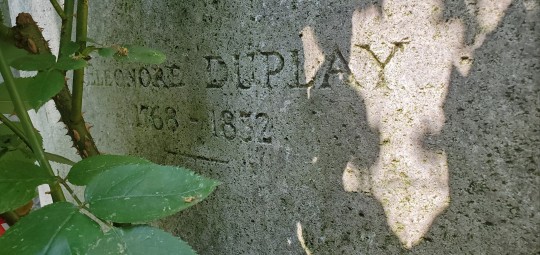
Conversationally, I now believe that Eleonore wasn't born in 1768, but more likely in early 1767 or even late 1766 (more on that here).
Edit: LMAO, I also made a typo on Robespierre's birthday and originally wrote "5 May 1758" instead of the 6th, probably because my idiot brain was thinking "May, that's the 5th month". All fixed now! But my typo will live on in a few reblogs 😬
49 notes
·
View notes
Text
Oh thank god. In the preface to Le conventionnel Le Bas, Victorien Sardou acknowledges that his and G. Lenotre’s plans of the Duplay house (the ones were all familiar with) are incorrect. I’m not crazy, and, possibly, neither was Élisabeth.
Who wants to hear all about the Duplay house?

#I have time this weekend and might finally be able to puzzle this out#elisabeth duplay#duplay house#robespierre#french revolution#frev
37 notes
·
View notes
Text
Outlander except it’s frev and I’m simply traveling back in time to introduce them to tumblr, minecraft and 2023 college Anatomy and Physiology tests.
#and also to pick their brains and psychoanalyze them.#and also to introduce Saint Just to The Phantom of the Opera because I think he’d enjoy that.#frev#french revolution#claws out for the main 5#maximilien robespierre#robespierre#louis antoine saint just#saint just#camille desmoulins#desmoulins#jean paul marat#marat#georges danton#danton#charlotte robespierre#augustin robespierre#lucile desmoulins#philippe le bas#elisabeth duplay#therese gelle#robespierre protection squad#claws out for robespierre#lucie likes history#ktfatl
7 notes
·
View notes
Text
🥰

97 notes
·
View notes
Text
UN DÎNER AVEC JULES SIMON ET CHARLOTTE ROBESPIERRE
Here is (finally) the anecdote as recorded by Jules Simon, followed by the summary given by Lenôtre, and the interpretation Coutant makes of it from the latter. Also some of my annotations coming from the part of my thesis where I reproduced the anecdote. (It's all in French obviously so anyone feeling brave enough to translate to English is more than welcome!)
(Source: Jules Simon, Premières années, Paris, Flammarion, 1901, p. 181-187.)
[…] C’est par un universitaire que je fus vraiment introduit dans le monde républicain. M. Philippe Le Bas, mon professeur d’histoire à l’École normale, m’accueillit chez lui, et me fit accueillir dans quelques familles restées fidèles aux souvenirs de 1793[1].
C’était le fils du conventionnel Le Bas, ami et disciple de Robespierre. Il était fier de la renommée de son père. On raconte même qu’avant d’être membre de l’Institut, il se faisait annoncer dans les salons sous ce titre : « M. Philippe Le Bas, fils du conventionnel ». J’avais désiré voir de près des survivants de la Révolution : mon succès dépassait mes espérances, puisque je me trouvais d’emblée dans le monde de Robespierre. J’étais comme un jeune débutant qui aurait voulu goûter d’un vin généreux, et à qui on aurait versé abondamment de l’alcool. J’avais assez de fermeté pour m’accommoder à peu près des Girondins, mais je fus sur le point de perdre l’esprit en me trouvant au milieu des amis de Robespierre.
La veuve du conventionnel Le Bas qui accoucha quelques semaines après de celui qui devait être mon professeur, était une des filles du menuisier Duplay. Cette famille Duplay était devenue la famille de Robespierre. Il y demeurait ; il était, quand il mourut, fiancé de Mademoiselle Éléonore, la sœur de Mme Le Bas. La fiancée prit le deuil de Robespierre et le porta jusqu’à sa mort. Toute cette famille était étroitement unie, et le souvenir du grand mort ne contribuait pas peu à cette union. Le Comité de Salut Public, universellement condamné et maudit, avait encore quelques amis dans ce coin du monde ; et pour ces survivants, pour ces persistants, la famille Le Bas était l’objet d’un respect particulier.
Du reste, le menuisier Duplay avait donné à ses filles une éducation excellente. Ce menuisier était un entrepreneur en menuiserie ; il remplit pendant quelque temps les fonctions de juge au Tribunal révolutionnaire. Son petit-fils, celui qui fut mon maître à l’École normale, était l’homme le plus doux et le plus bienveillant du monde. Quand il n’avait plus à s’expliquer sur son père et les amis terribles de son père, il parlait et agissait en homme cultivé, ami de la paix, et préoccupé, par-dessus tout, de ses recherches d’érudition. Il avait été précepteur d’un prince. Il est vrai que ce prince était le prince Louis-Napoléon, celui-là même qui, contre toute attente, devint Empereur des Français. L’avènement de son élève au rang suprême ne changea rien ni aux idées de Philippe Le Bas, ni à sa conduite, ni à son langage, ni à sa vie. Il resta jusqu’à la fin tel que je l’avais connu en 1834, M. Philippe Le Bas, fils du Conventionnel.
On savait parmi les familiers de M. Le Bas, que je ne connaissais personne à Paris ; et c’était une raison pour eux de m’inviter à dîner ou à déjeuner le dimanche. Je fus invité une fois avec des formes solennelles et mystérieuses qui me donnèrent lieu de penser que j’allais assister à quelque événement d’importance. J’arrivai à l’heure dite. Il y avait quelques convives, tous républicains avérés et rédacteurs des journaux du parti. Près d’une heure s’écoula ; la personne qui avait donné lieu à la réunion se faisait attendre. Je pense que tout le monde, excepté moi, était dans le secret ; mais j’étais trop timide pour faire une question. Enfin un grand mouvement se produisit, la famille se porta tout entière dans l’antichambre pour rendre la réception plus solennelle, et nous nous rangeâmes autour de la porte, pendant qu’à côté de nous on échangeait des propos de bienvenue.
On n’annonçait pas dans cette modeste maison. Je vis entrer une femme âgée qui marchait péniblement et qui donnait le bras à la maîtresse de maison. Elle était venue seule. On la salua très profondément ; elle répondit à ce salut en reine qui veut être aimable pour ses sujets. C’était une femme très maigre, très droite dans sa petite taille, vêtue à l’antique avec une propreté toute puritaine. Elle portait le costume du Directoire, mais sans dentelles ni ornements. J’eus sur le champ, comme une intuition que je voyais la sœur de Robespierre. Elle se mit à table, où elle occupa naturellement la place d’honneur. Je ne cessai de l’observer pendant tout le repas. Elle me parut grave, triste, sans austérité cependant, un peu hautaine quoique polie, particulièrement bienveillante pour M. Le Bas, qui la comblait d’égards ou, pour mieux dire, de respect. Quand la conversation devint générale, elle y prit peu de part ; mais écouta tout avec politesse et attention. S’il lui arrivait de dire un mot, tout le monde se taisait à l’instant. Je me disais qu’on n’aurait pas mieux traité une souveraine.
Le nom de Robespierre ne fut pas même prononcé. Au fond, c’est à lui que tout le monde pensait, et c’est de lui qu’on parlait sans le nommer. C’était l’habitude dans ces familles dévouées. Je ne l’attribue à aucune appréhension de se compromettre en prononçant ce nom qui était là, révéré, et exécré partout ailleurs. On ne le prononçait pas, parce qu’il était sous-entendu dans tous les discours.
Il y a deux Robespierre : le Robespierre féroce et le Robespierre raisonneur et sentimental. Le culte de ses fanatiques s’adressait également au dictateur et à l’orateur humanitaire. Les revenants avec lesquels j’étais attablé n’appartenaient pas à 1834. Ils voulaient être, ils étaient de 1793. Les grandes tueries n’étaient pour eux que des actes nécessaires de gouvernement. À peine les Thermidoriens eurent-ils renversé le Comité de Salut Public qu’ils s’exercèrent à le copier. Au 18 Fructidor, La Réveillère-Lépeaux, le plus dur des hommes, déporta des Directeurs, des représentants et des journalistes à Sinnamari. Pendant un quart de siècle, la proscription fut dans les mœurs. Je crois bien qu’on excusait les tueries de 1793 autour de moi, que peut-être même on les glorifiait. Mais on pensait surtout au disciple de Jean-Jacques Rousseau, aux discours contre la peine de mort et sur l’Être suprême, à l’auteur de tant d’homélies attendrissantes sur la fraternité et la vertu. Je suis sûr que Charlotte le revoyait dans ses rêves, précédant la Convention à l’autel, le jour de la fête religieuse, en habit bleu clair et en cravate blanche, et portant dans ses bras une gerbe de fleurs.
Melle Robespierre avait soixante-quatorze ans lorsque je la vis. Je savais qu’elle avait passionnément aimé ses deux frères et que, quand Maximilien s’était installé chez les Duplay, elle s’était montrée irritée et jalouse. Elle faisait à ces nouveaux amis un crime de leur amitié. Elle allait jusqu’à prétendre qu’Éléonore avait employé la ruse pour se faire épouser. Elle vécut loin d’eux après la catastrophe. Le Premier Consul lui fit une pension de 3.600 livres, qui fut plus tard réduite de plus de moitié, mais qu’elle toucha presque sans interruption jusqu’à sa mort. Elle vivait de cette faible ressource dans un isolement absolu. Elle publia des Mémoires qui roulaient sur des événements connus, et ne piquèrent point la curiosité. Je suppose qu’elle consentit à laisser faire cette publication dans un moment de détresse[2]. Sans doute, elle avait voulu, aux approches de la mort, oublier son ancienne rancune. Elle s’était souvenue avec attendrissement d’une femme vénérable qui avait failli être la sœur de son frère. Elle avait voulu se rapprocher un moment de cet homme déjà célèbre, dont le père avait été le plus fidèle ami de Maximilien. Elle sentit enfin que ceux qui s’étaient rencontrés dans ces jours lugubres devaient être réunis dans le souvenir comme ils l’avaient été dans la vie.
Je croyais rêver et je rêvais en effet. Les deux femmes qui étaient là, quel que fut leur nom, avaient vécu dans l’intimité de Robespierre, écouté sa parole comme celle d’un pontife, admiré sa vie comme celle d’un héros et d’un sage. Les questions se pressaient en tumulte dans mon esprit, et je me demandais avec effroi si j’oserais interroger mon maître et si je ne me laisserais pas opprimer une fois de plus par ma maudite timidité.
Il me conduisit jusqu’à la porte pour me dire d’un air triomphant : « Comment la trouvez-vous ? » Je m’enfuis et je me dis tout en courant à travers les rues de Paris, que je n’étais pas à ma place dans ce monde-là. Tout, dans ce temple, était respectable, excepté le Dieu. J’eus le souvenir de mes morts et, en même temps, de ma haine[3].
Version rapportée par G. Lenôtre :
Un jour, écrivait-il, il y a quelques années dans un de ses articles du Temps, un jour que je déjeunais chez mon professeur d’histoire, M. Philippe Lebas, je vis entrer dans le salon une vieille demoiselle, bien conservée, se tenant très droite, vêtue, à peu près comme sous le Directoire, sans aucun luxe, mais d’une propreté recherchée. Mme Lebas, la mère (autrefois Mlle Duplay) et M. Lebas l’entouraient de respects, la traitaient presque en souveraine. Elle parla peu pendant le repas, poliment, avec gravité. « Comment la trouvez-vous ? me dit M. Lebas quand nous fûmes seuls dans son cabinet – Mais qui est-ce ? – Comment ? Je ne vous l’avais pas dit ? C’est la sœur de Robespierre. » J’étais alors élève de première année à l’École normale.
(Source : G. Lenôtre, Paris révolutionnaire, Firmin-Didot, Paris, 1895. p. 48.)
Version rapportée par Paul Coutant :
Charlotte Robespierre a davantage occupé l’opinion. M. Lenôtre, dans son dernier volume[4], lui a consacré tout un chapitre, et le fils du conventionnel Le Bas a tracé sa biographie, en quelques lignes qui détruisent, par leur sévérité, la portée d’une historiette racontée jadis par Jules Simon dans le Temps :
« Un jour que je déjeunais chez mon professeur d’histoire, M. Philippe Le Bas – dit Jules Simon – je vis entrer dans le salon une vieille demoiselle, bien conservée, se tenant très droite, vêtue, à peu près, comme sous le Directoire, sans aucun luxe, mais d’une propreté recherchée. Mme Le Bas, la mère, (autrefois Mlle Duplay) et M. Le Bas l’entouraient de respects, la traitaient presque en souveraine. Elle parla peu pendant le repas, poliment, avec gravité : « Comment la trouvez-vous ? me dit M. le Bas quand nous fûmes seuls dans son cabinet. –Mais qui est-ce ? –Comment ? Je ne vous l’avais pas dit ? C’est la sœur de Robespierre. » J’étais alors élève de première année à l’École normale. »
L’élève de première année à l’École normale fut, depuis, un homme éminent, un philanthrope remarquable, et pourtant il lui arriva de manquer d’indulgence pour ceux de ses anciens professeurs qui l’avaient accueilli, pourtant, avec bonté : le cœur étant excellent chez lui, j’aime à croire que la mémoire seule était en défaut ; rien d’étonnant à ce qu’elle l’ait mal servi lorsqu’il écrivit sa chronique.
« Charlotte Robespierre – dit Philippe Le Bas dans son Dictionnaire encyclopédique de l’Histoire de la France – ne rougit pas de recevoir des assassins de ses frères une pension qui, de 6,000 fr. d’abord, puis réduite successivement jusqu'à 1,500, lui fut servie par tous les gouvernements qui se succédèrent jusqu'à sa mort (1834). Elle a laissé des Mémoires qui contiennent de curieux renseignements, mais où le faux se trouve trop souvent mêlé au vrai. »
Je ne pense pas que le savant consciencieux qui traça ces lignes ait jamais traité Mlle Robespierre en « souveraine » : c’est « solliciteuse » qu’a voulu écrire Jules Simon.
Aussi bien, Charlotte Robespierre ne saurait m’intéresser que par les lettres ou souvenirs où elle a parlé de son frère Maximilien, et, sur ce point, le document que reproduit M. Lenotre a le plus grand intérêt, parce qu’il dissipe des malentendus copieusement utilisés par certains écrivains ; c’est le testament que voici, conservé dans les archives de Me Dauchez, notaire à Paris :
« Voulant, avant de payer à la nature le tribut que tous les mortels lui doivent, faire connaître mes sentiments envers la mémoire de mon frère aîné, je déclare que je l’ai toujours connu pour un homme plein de vertu ; je proteste contre toutes les lettres contraires à son honneur, qui m’ont été attribuées, et, voulant ensuite disposer de ce que je laisserai à mon décès, j’institue pour mon héritière universelle, Mlle Reine-Louise-Victoire Mathon.
« Fait et écrit de ma main, à Paris, le 6 février 1828.
« Marie-Marguerite-Charlotte DE ROBESPIERRE. »
On ne peut guère discuter la sincérité de ceux qui vont mourir.
(Source : Paul Coutant, Autour de Robespierre : Le conventionnel Le Bas, d’après des documents inédits et les mémoires de sa veuve, Paris, E. Flammarion, 1901, p. 85-87.)
Annotations:
[1] Le souvenir de 1793 continue de lier plusieurs familles, dont la famille Le Bas-Duplay, comme l’écrit Florent Hericher, Philippe Le Bas (1794-1860), Un républicain de naissance, Paris, Librinova, 2021, p. 191, n. 276.
[2] Ce n’est pas tout à fait exact, vu la participation d’Albert Laponneraye au projet.
[3] Il est né à Lorient, en Bretagne, l’une des régions insurgée contre la Révolution et foyer de la Chouannerie. Le refus de la constitution civile du clergé (1791) et les tensions causées par la conscription du 15 août 1792 et la « levée de 300 000 hommes » décrétée le 24 février 1793 mènent à l’insurrection.
[4] Paul Coutant (Autour de Robespierre.., p. 85, n. 2) fait référence à l’ouvrage Vieilles maisons, vieux papiers (1900).
#jules simon#paul coutant#g. lenôtre#testimonials and commentaries#elisabeth duplay#philippe le bas fils#élisabeth duplay lebas#élisabeth duplay#élisabeth lebas#charlotte robespierre#19th century
17 notes
·
View notes
Photo
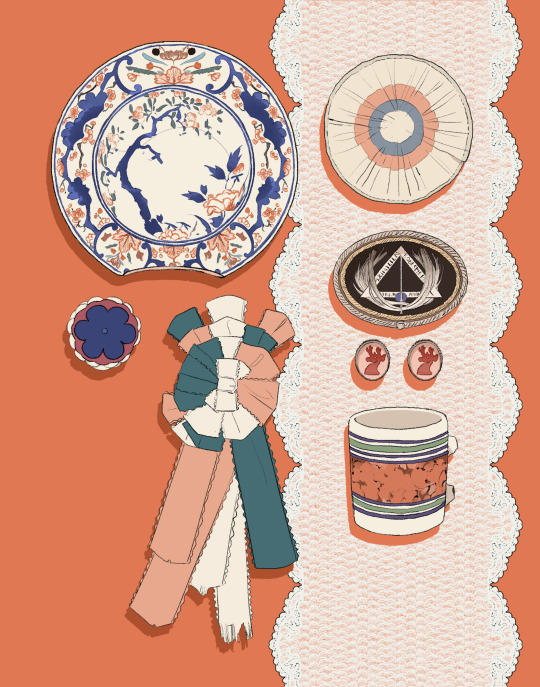


It’s Thermidor again
579 notes
·
View notes
Text
Frev locations compile
Thought of compiling a list of frev significant locations so it can help with recommendations for anyone who happens to be travelling/visiting! This is only done to my knowledge and not a complete list, please feel free to suggest if you happen to know more locations that I completely missed!
so here is the frev pilgrimage list! Long post warning.
(Note: The items are not in any particular order)
(Note: I typed this post up a long time ago but couldn't finish, a lot of thanks to the people who helped out on contributing information and your patience with me.)
Musée Carnavalet (Paris)
This one is very obvious, it is a must go for seeing a collection of frev related artifacts and paintings, including Couthon’s wheelchair, Robespierre’s hair, the most iconic portraits etc. Also its FREE.
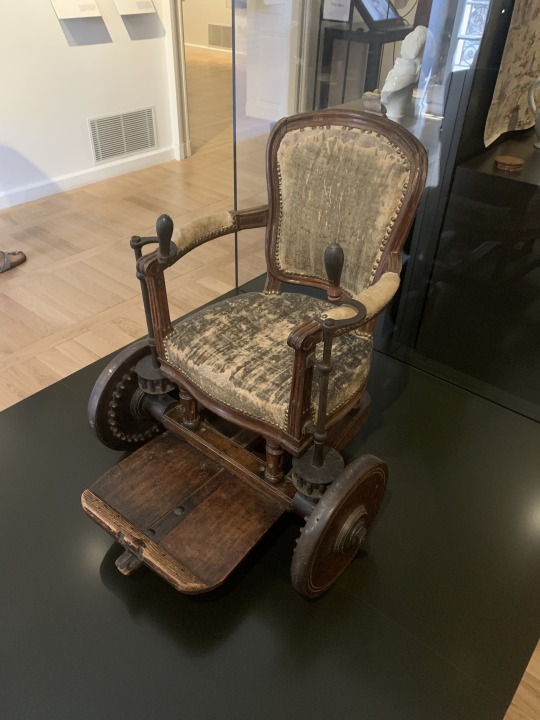
Panthéon (Paris)
You can see the statue of the National Convention deputies. It doesnt have too much related to frev directly, but Rousseau and Voltaire (and Carnot…..) are interred there
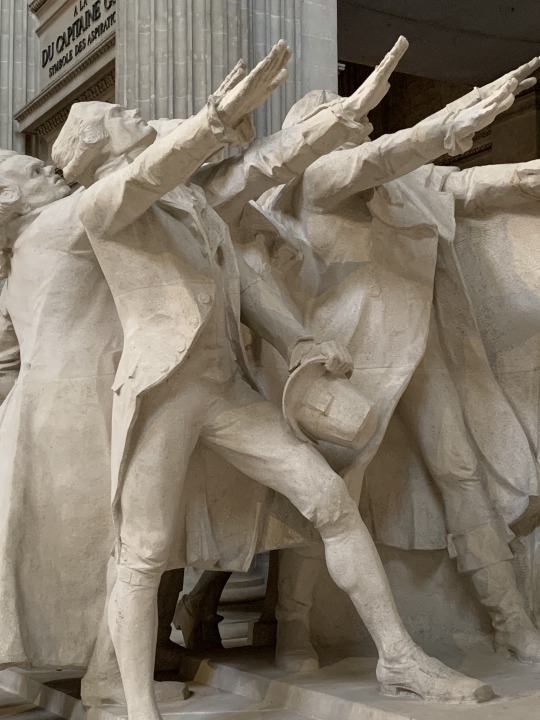
La Conciergerie (Paris)
If you want to see the Deseine bust of Robespierre, but cant go to Vizille, there is a copy of it here within Paris at the conciergerie. It is the place where most frev figures as well as Antoinette spent their last monents.

Musée des archives nationales (Paris)
(June 2023) There is a temporary exhibit featuring frev rn which I highly recommend (also its free to go so like GO)
But beyond the temporary exhibit, I believe there are still a few things in permanent collection (Robespierre’s note book page, Antoinette’s last letter in prison, Comte d’Artois’ letter etc), including the famous 9 thermidor table that Robespierre supposedly lied on. the museum is free to visit.

Père la Chaise (Paris)
@robespapier wrote a better post on navigating the cemetery. It helped me so much with finding the graves of Lebas, Elisabeth and Eleonore Duplay! Thank you so much for the guide!

Rue Saint Honoré (Paris)
the current address of the Duplays household is 398 rue saint-honoré, which is now next to a louboutin store…. There is a commemorative plaque there indicating Robespierre’s residence there.
Im not sure about going inside the residence….There was construction when I visited and the door was open, heres how it looks on the inside.
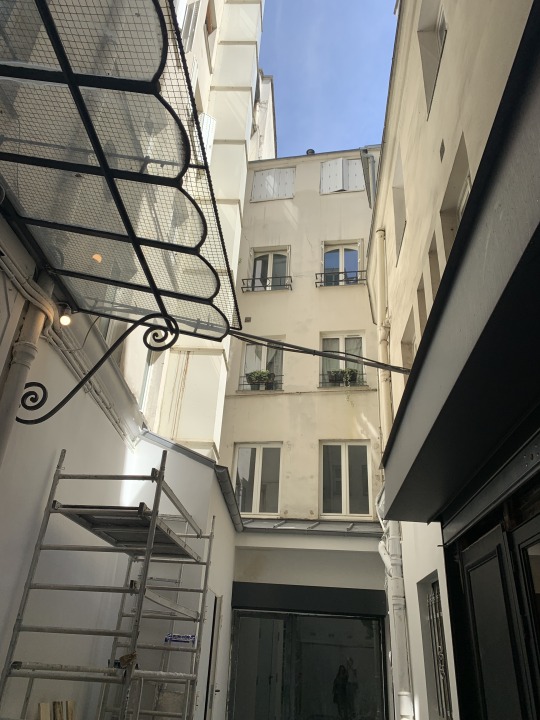

SJ’s bust (Paris & Angers)
I have not visited either of the two locations yet, but you can find that white bust of Saint-Just (that seemed to be modelled after the pastel portrait in the Carnavalet) in either Petit Palais (Paris) or Galerie David d’Angers (Angers).
@orpheusmori has posted some Petit Palais pictures here
@robespapier has posted some Galerie David d'Angers pictures here
Marat sign (Paris)
i have an image of this plaque sitting on my phone, I forgot where it was located until @orpheusmori helped me track the location of it! It is in the Odéon area and should be in the small narrow street with the back side of Le Procope. It commemorates the location as an important area during the French Revolution as well as the place where Marat established his printing shop.
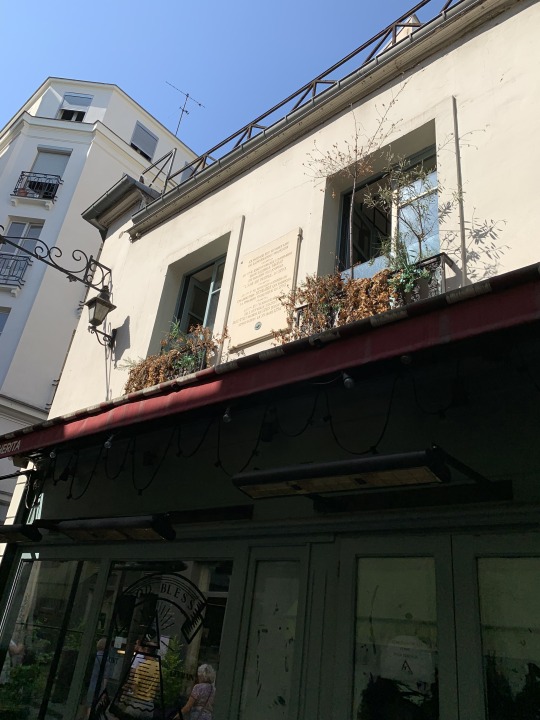
The front of the same building also has another Marat plaque! I didnt know about it before thank you @orpheusmori for finding and contributing the photo! This one is above an Jewellery store (Amour de Pierres) https://maps.app.goo.gl/8X9zgKYpMiLJcULq7

Olympe de Gouges sign (Paris)
Once again, i have a photo of the plaque proving its existence, but I took it years ago and i dont remember where it was exactly.... It was all in the Odéon area, it shouldn’t be too far from the other….
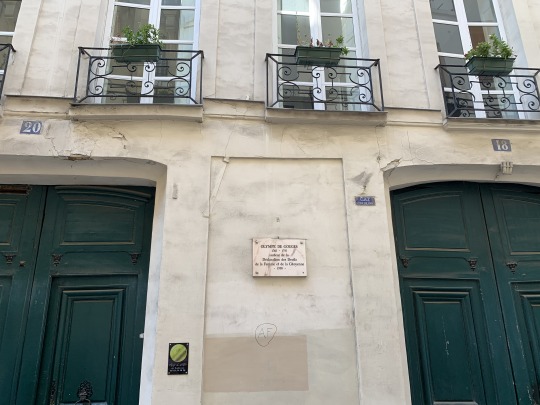
Danton statue (Paris)
there is a Danton statue! Right outside the Odéon metro! You cant miss it. Also the placement of the statue is where he once lived.

Procope (Paris)
Its a really old cafe frequented by a lot of philosophes as well as many frev figures. There is also a bicorn from Napoleon inside. Right now its still a restaurant establishment, and its difficult to visit unless you eat inside….which is expensive….
However ! This whole general Odéon area is full of other frev landmarks (some more mentioned below). Including the metro station which has a bust of Danton.

Versailles revolutionary room (Versailles)
Beyond the royal family, there is a room dedicated to a lot of major Revolutionary Army generals and battles. Theres that one painting of Lafayette if u into that
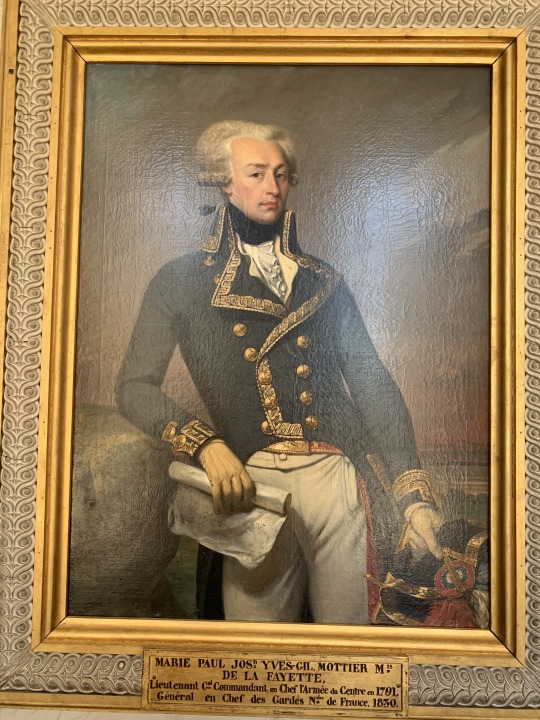
Musée des armes/Invalides (Paris)
It has a significant collection of military artefacts from the French Revolution and its a really good resource for armory researches. The museum also has a sword that belonged to Lafayette, as well as a sword belonging to Carnot during the Directoire (image below)

Louvre
The Louvre does not have a lot relating to the French Revolution but it has a few significant paintings and a lot of David’s work. One of the Death of Marat copies produced by David’s studio should be in the museum, as well as a painting featuring the battke of fleurus (with SJ cameo)
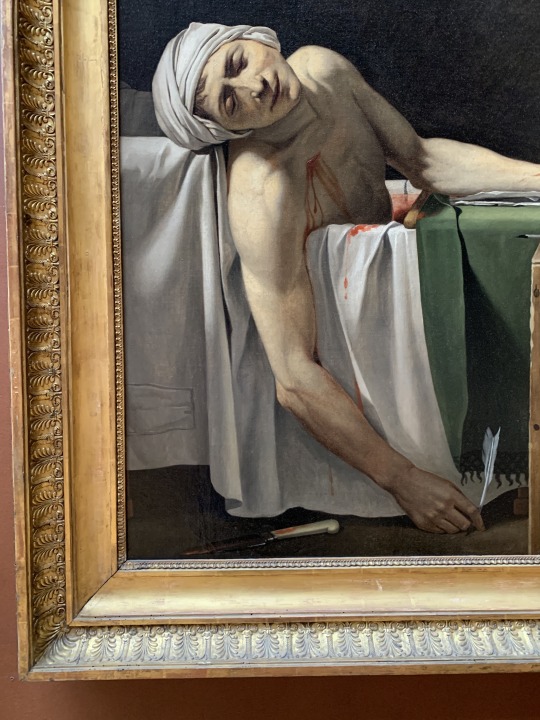
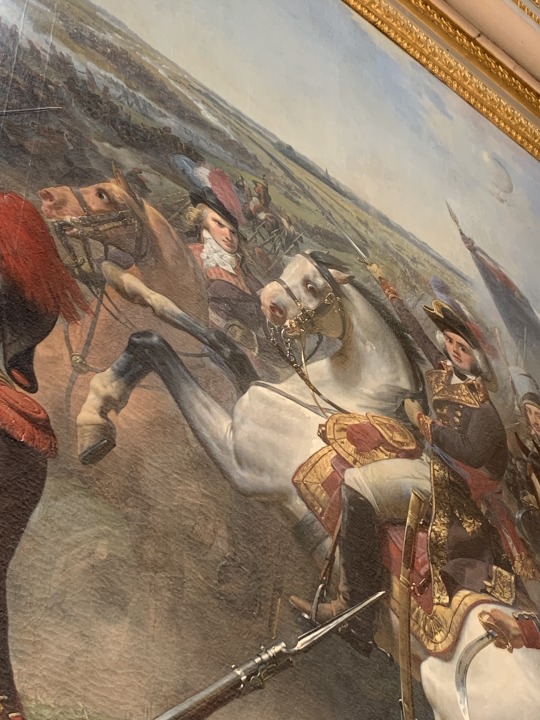
Tennis court (Versailles)
Near the palace of Versailles you can find the room where the deputies swore the famous oaths. It is free to enter, although last time I went it was undergoing construction, hopefully it should have finished by now.
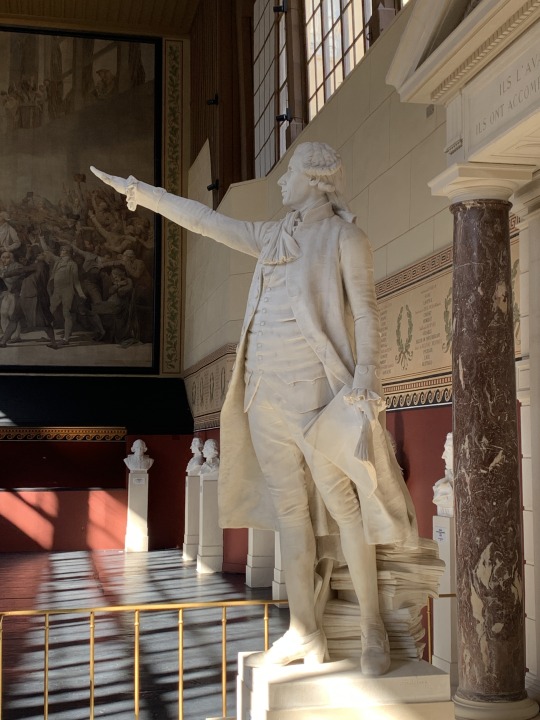
Musée de la Révolution Française (Vizille)
If you can go to Vizille… GO TO VIZILLE! The easiest way by transport would be to stay at Grenoble then take one of the buses that runs between Grenoble and Vizille. It is a whole museum dedicated to the revolution (and it is free) and the park is really pretty. This is where you can find the statue of Marat,

The Deseine busts including dear Bonbon,
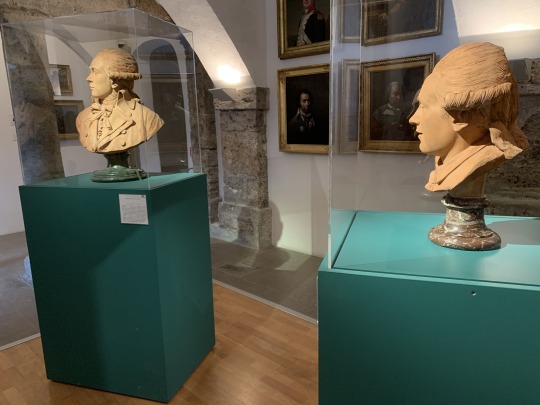
And DJ Saint-Just.

Also special thank you to @citizentaleo for taking me there, I would’ve otherwise been lost in the French mountains lol, thank you!
Maison Robespierre (Arras)
You can visit Robespierre’s residence in Arras. It is possible to visit the inside, but it has a very specific and short opening hours.
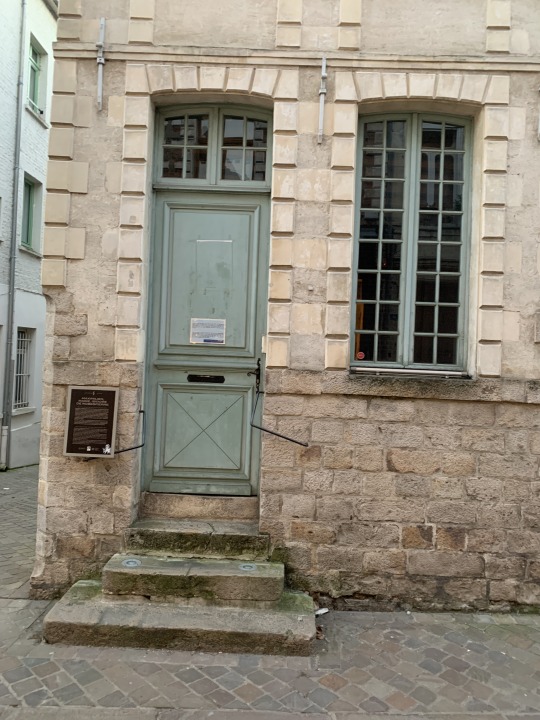
I wasn’t able to go in since I was only in Arras for a few hours….But I got to attend a conference by Hervé Leuwers aaa (He is very sweet and I learned quite few new things from the presentation, but thats post for another day)

Robespierre metro stop (Paris suburb)
There is in fact, a Robespierre metro station on line 9! Not much beyond name but at least some credit to him! Alas it is not exactly within Paris and just on the outskirt. (Oh and there is also Voltaire)

Cordeliers club (Paris)
I dont have much information on what happened to the original location of the Cordeliers club and how it was modified, but the location is part of the sorbonne campus now i believe. I'd be very curious if anyone knows more information on this.
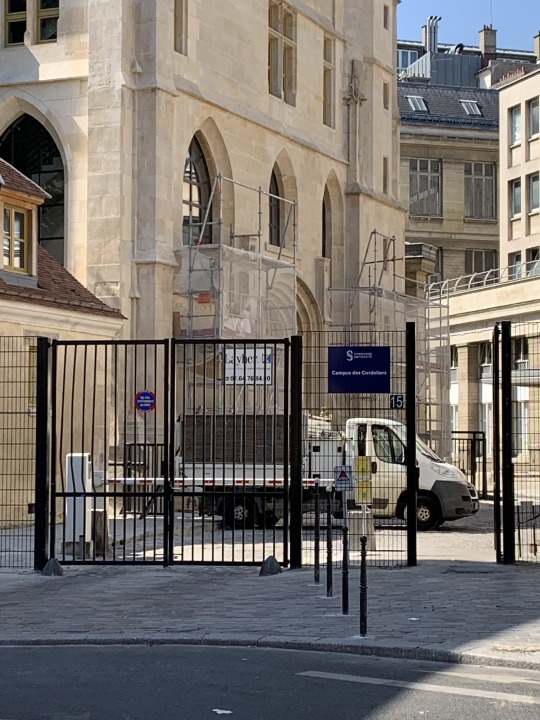
Place de la Bastille (Paris)
The Bastille is of course not there anymore, but the ground around the square and including the metro stations near by have traces/marks of where the old prison would have stood.
(and yea the picture was taken during a manif)
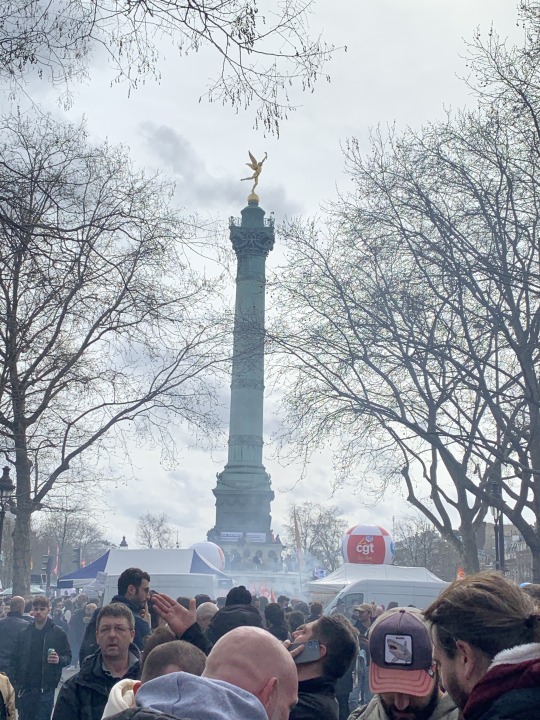
Pavillon de flore (Paris)
The pavillon attached to the Louvre and next to the Pont Royale is the Pavillon de Flore, which is where the Committee de Salut Publique worked.

Jacobin club (Paris)
Alas the original convent in which the Jacobin gathered is no more and replaced by a commercial centre instead (Passage de Jacobins) . There is a sign however recognizing the place for what it was.
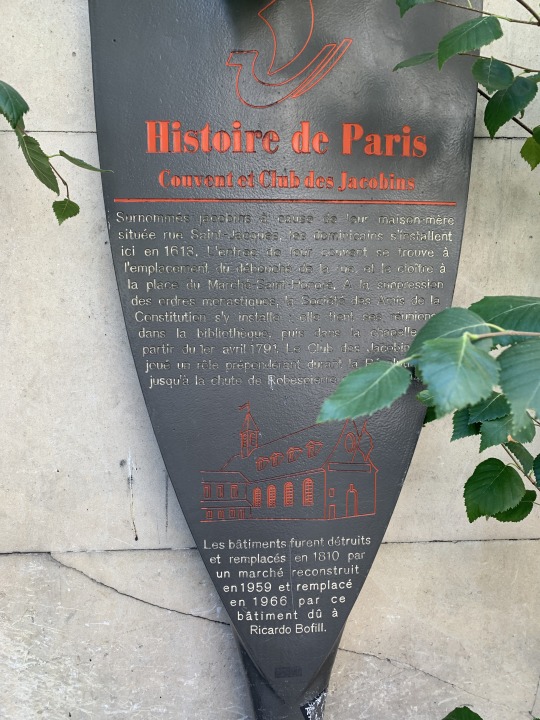
Place de la Concorde (Paris)
Originally Place de la Révolution, there is a plaque remembering the executions that took place here near the obelisk.

Maison SJ (Blérancourt)
I have not been to Saint-Just's house yet, because it is very hard to commute there without a car. But it certainly is still there and (I believe) maintained by the Saint-Just Association.
Catacombs (Paris)
According to wikipedia....The bone remains of many revolutionaries buried in Cimitière Errancis (which has a plaque indicating it in the 8th arrondissement, according to wikipedia) are transferred to the catacombs, including Robespierre, Danton, etc. The catacomb is roughly organized chronologically but there is obviously no sign indicating which bone it actually is.
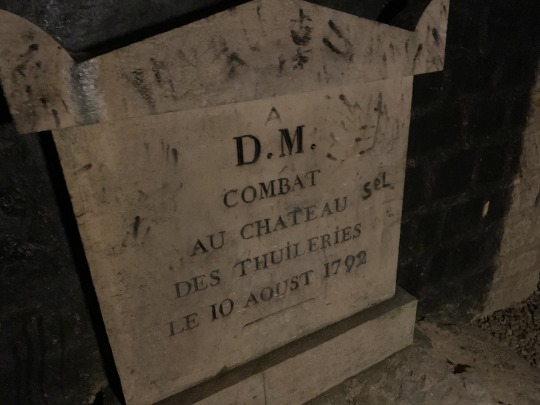
Cluny La Sorbonne station (Paris)
It is on metro line 10 and the waiting tunnel is decorated with signatures of prominent French figures. It doesn't have any actual frev artifacts, but it looks cool and you can spot Robespierre, Danton, and Camille Desmoulins' signatures on the ceiling.

Louis le Grand (Paris)
The school that Robespierre attended is still under the same name and still in use as a school! (i've reached the image maximum alas i cannot add more images...)
And that is all I can think of so far! There is surely a lot more that are out there (including outside of France). Once again, please feel free to mention if you know more frev landmarks that I missed out on.
And to whoever happens to be travelling I hope you find this list helpful to start with.
193 notes
·
View notes
Note
have the duplays ever done something that isnt coddling robespierre
This is so mean I can't help but love it.
"Done anything" in what sense? Maurice and his nephew Simon were established carpenters and also revolutionaries (pre and after Robespierre). Or do you mean women?
Eleonore Duplay was a painter. We know very little about Victoire. Babet describes herself as scatterbrained and we don't know much about her interests and activities, but we know that she was arrested after Thermidor and imprisoned with her 5 week son. Eleonore suffered the same fate. During imprisonment, Babet was offered to marry a man suitable for Thermidorians, but she refused, saying she would rather die. We also know about her life after the imprisonment, when she had to resort to washing clothes to survive.
As for Mme Duplay, I don't know enough about her, so I might be missing a lot. There was a recent discussion about her conflict with Charlotte Robespierre being possibly about the revolution and politics - both women seem to have been more into politics and revolution than how they are perceived. Mme Duplay died in her prison cell on 11 Thermidor.
Men were more active politically, even before Robespierre moved in with them. They also got entangled into politics after Thermidor, with Babeuf (although I am not completely sure about their role, will need to research it.)
In general, Duplays were a wealthy (or close to wealthy) family with their own business. They were active revolutionaries and suffered for it (being arrested after Thermidor). They were clearly passionate about the revolution and participated in it; they were always more than just "Robespierre's hosts".
Is this what you meant?
38 notes
·
View notes
Text
Favorite couple frev
I know the question was already asked and there are a lot of surveys in this but I will do it again
My favorite is Jean Paul Marat and Simone Evrard but my second is Charles and Sanité Bélair
20 notes
·
View notes
Photo
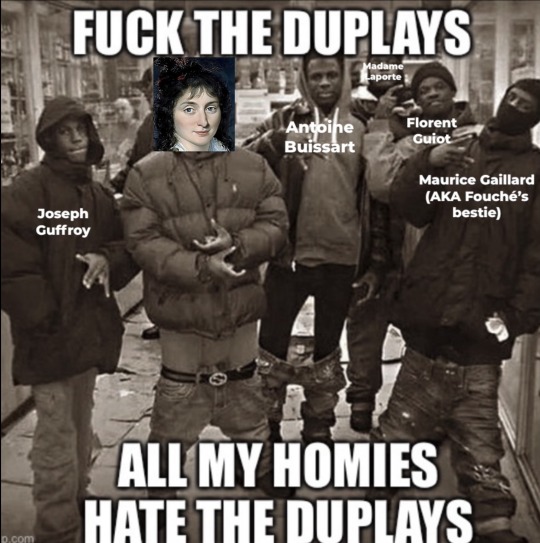

Which side do YOU pick?
#charlotte robespierre#augustin robespierre#elisabeth lebas#albertine marat#elisabeth duplay#armand joseph guffroy#a shame none of charlotte’s friends got a portrait painted#but then no one knows who they are either#frev
53 notes
·
View notes
Text
Salut citoyens & citoyennes !

This is the first time I write something on here. You can call me Florelle. I created this blog mostly to talk about my interests in peace, especially the French Revolution. I've started to dive more into the subject two years ago and all the things I learnt gave me a lot of inspiration and hope.
I'm mostly interested in the history of jacobinism, robespierrism, babouvism, their influence and legacy in the XIX century. And also the role and the condition of women during the revolution.
Apart from Robespierre, my favorite revolutionary - or better to say the first that caught my attention when I've started to study the Frev - is Saint-Just (the reason behind my nickname). Special mentions for Marat, Georges Couthon, Augustin and Charlotte Robespierre, Éléonore and Elisabeth Duplay, Philippe Le Bas and Theroigne de Méricourt.
As an italian myself, I'm very fond of Filippo Buonarroti and I find his life and works very fascinating. I'm currently reading more about him and his legacy so maybe, if someone is interested, I could think about translating (since the texts are mostly in italian) some parts and share them. I've found very useful sources on here and I want to contribute at least a little to this passionate community.
English is not my first language and, while I think I'm kinda good with it, I apologize in advance for any possible mistake. I can read and understand french but my written french is still not the best and I'm still improving.
It is superfluous to say but, of course, I'm not an expert. First of all I'm a literature student which is also very passionate about history and is always looking forward to learn more.
[You will probably see me sharing things about my other interests]
Disclaimer: if you see me sometimes retweeting things about royals from the past, please don't mistake me for a monarchist. I'm just interested in few of them as historical figures (and mostly for the drama of their lives).
That's all.
69 notes
·
View notes
Text
I've brought the Duplays a heather! I wanted something for Babet too, but I already had my arms full, so I compromised by giving her a few branches. (side pic: for the little snail)



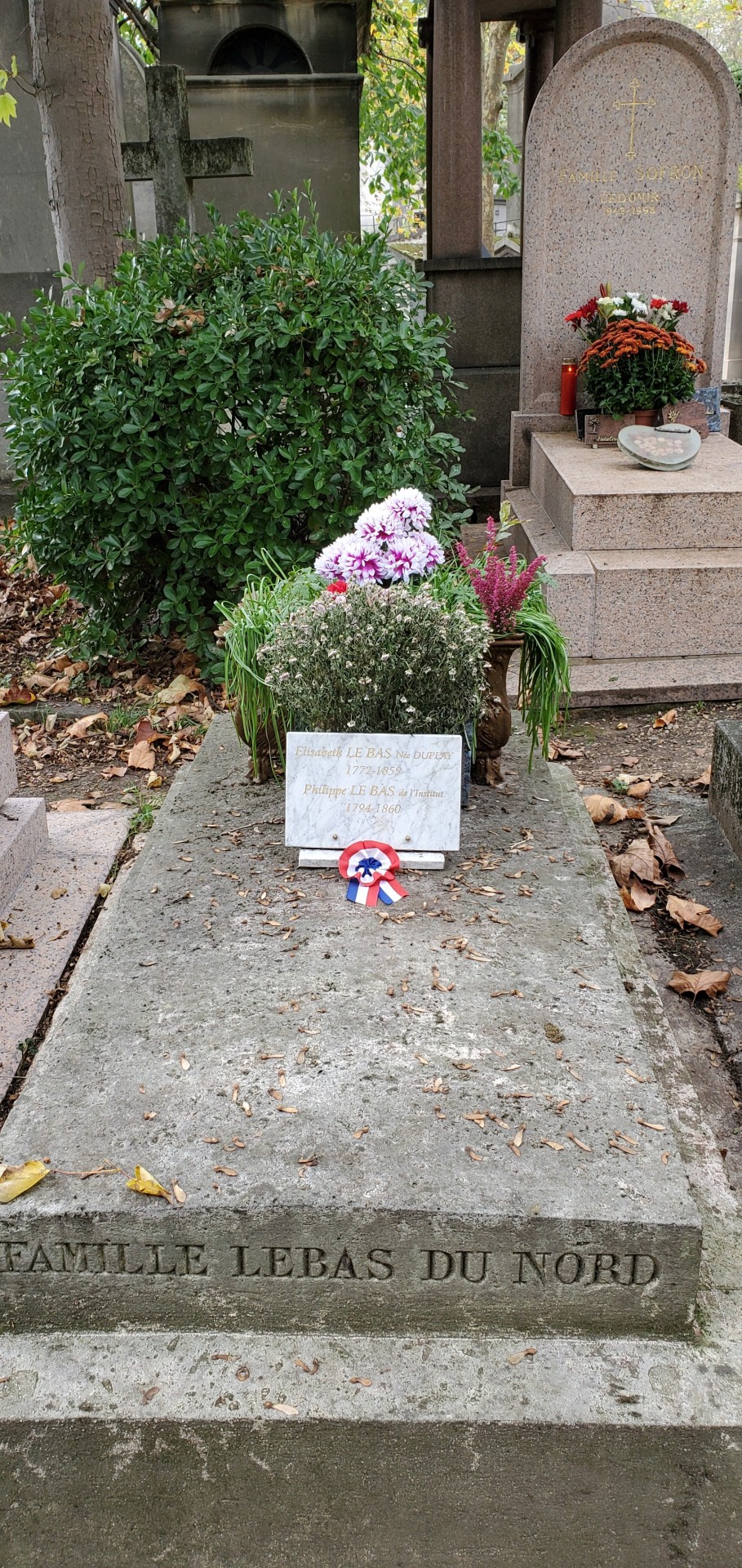

The cocardes are still doing good, I hope they survive the winter. And I hope the heather lives long too.
74 notes
·
View notes